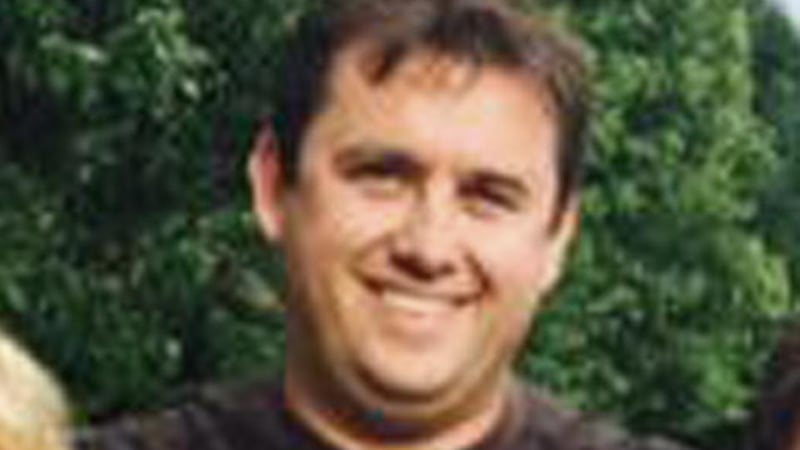During his opening statement in the Jason Corbett murder trial, Davidson County assistant district attorney Alan Martin made reference to a grim reality: "It wasn't all sunshine, roses and unicorns."
The statement was made about the marriage of Mr Corbett, from Limerick, and Molly Martens but it could have applied to the case that is currently being laid out by the prosecution. A foreshadowing of sorts, it was a sinister reminder of what was to come for the jurors.
Pictures of Mr Corbett’s bloody, lifeless body have been displayed ad nauseam in the courtroom at Davidson County Courthouse in Lexington, North Carolina. One juror became ill at the sight of the eighth exhibit introduced by the prosecution. There have been more than 100 exhibits since, with each seemingly more bone-chilling than the other.

The culmination of an horrific scene has created a predicament for everyone in the courtroom, starting from the outset, when jury selection was complicated by accounts of Mr Corbett’s sociable nature. Two potential jurors were excused due to their employment at Multi Packaging Solutions, where Mr Corbett worked as a plant manager. One employee said Mr Corbett was “well liked” and expressed a decidedly positive opinion of him.
“Not a day goes by Jason Corbett’s name isn’t mentioned,” the juror revealed.
He was excused from service, but his brief account spoke volumes of the difficulties the defence faces. With the prosecution allowed to present its case first, the jury has been inundated with countless visual depictions of a gruesome scene.
Ms Martens and her father, Tom Martens, are charged with second-degree murder and voluntary manslaughter in connection with an incident on August 2nd, 2015, after which Mr Corbett (39) was found beaten to death inside his home in Wallburg, North Carolina. They have both pleaded not guilty to those charges, claiming they acted in self-defence.
Opening statement
In an opening statement on Tuesday, David Freedman, lawyer for Mr Martens, said his client claimed to have seen Mr Corbett apparently attempting to strangle his daughter and then hit his son-in-law with a baseball bat multiple times.
During this week’s hearings, the Martens family occupied the first two rows of the left side of the courtroom. Across the aisle, two rows of the Corbett family sat pensively. Countless volumes of photographs have been submitted as evidence, some of which can be viewed by those seated in the gallery, including members of the family.
The Irish citizens seated at the very front of the courtroom, directly behind the prosecuting attorneys, have met all of this with unwavering stoicism. Mr Corbett’s brother-in-law David Lynch will often put his arm around his wife – Mr Corbett’s sister – Tracey but she does not step out of the courtroom.
Judge David Lee offered a warning to those in attendance before the first pieces of evidence were admitted that some might have need to step out.
“Now might be the time to do so,” he said with a low tone, emanating as much sympathy as he has shown at any point during the trial.
Still, the families remained stationary.
Diagonally from the Corbetts, Ms Martens and her father sit in complete silence. There have been precious few times either has said a word to anyone inside the room. Mr Martens has briefly consulted with his attorney Mr Freedman. The frequency with which he has done so can be counted on one hand.
Meanwhile, the defendants do not speak to each other when in sight of those in the courtroom. They enter each morning to the sound of clicking cameras, belonging to the small group of reporters gathered outside.
Ms Martens wears stylish dresses, accompanied by a jacket inside the courthouse where the cool temperatures stand in direct contrast to the searing heat of a North Carolina summer. Temperatures during the first nine days of the trial have approached 36 degrees celsius. It was this time of year in 2015 when Mr Martens dialed 911 and told the telecommunicator he had struck his son-in-law.
“I may have killed him,” Mr Martens said to the dispatcher.
First witness
Karen Capps was on the other end of that call. A 16-year veteran telecommunicator, Ms Capps was the first witness called by the prosecution. She described Mr Martens's demeanour on the phone as calm, a notion that would be repeated throughout testimony given by multiple law enforcement officers.
Ms Capps described Ms Martens as tearful and excited. David Dillard, a former Davidson County Sheriff’s deputy, also gave an account of Ms Martens’s demeanour the morning of her husband’s death.
Mr Dillard escorted her to his patrol vehicle that morning in the aftermath. He said despite not observing any injury, Ms Martens was making crying noises, but he saw no visible tears.
The defence attorneys – who have offered countless objections to efforts by the prosecution to call into question various aspects of the defendants’ actions and observable behaviours the morning after Mr Corbett’s death – seemed to take particular offence to this statement.
“Have you ever been strangled?” Cheryl Andrews, for the defence, asked Mr Dillard.
That question has been a point of contention between the two sides, and perhaps even at the heart of the case. As the assistant district attorneys question each witness about whether there was any noticeable injury to Ms Martens’s neck, they seem to be hinting at a different question, a more pertinent question, to Ms Martens.
Have you ever been strangled?
The court is scheduled to reconvene on Monday, when the prosecution will continue calling witnesses, after which the defence will have the opportunity to call its first witness.








